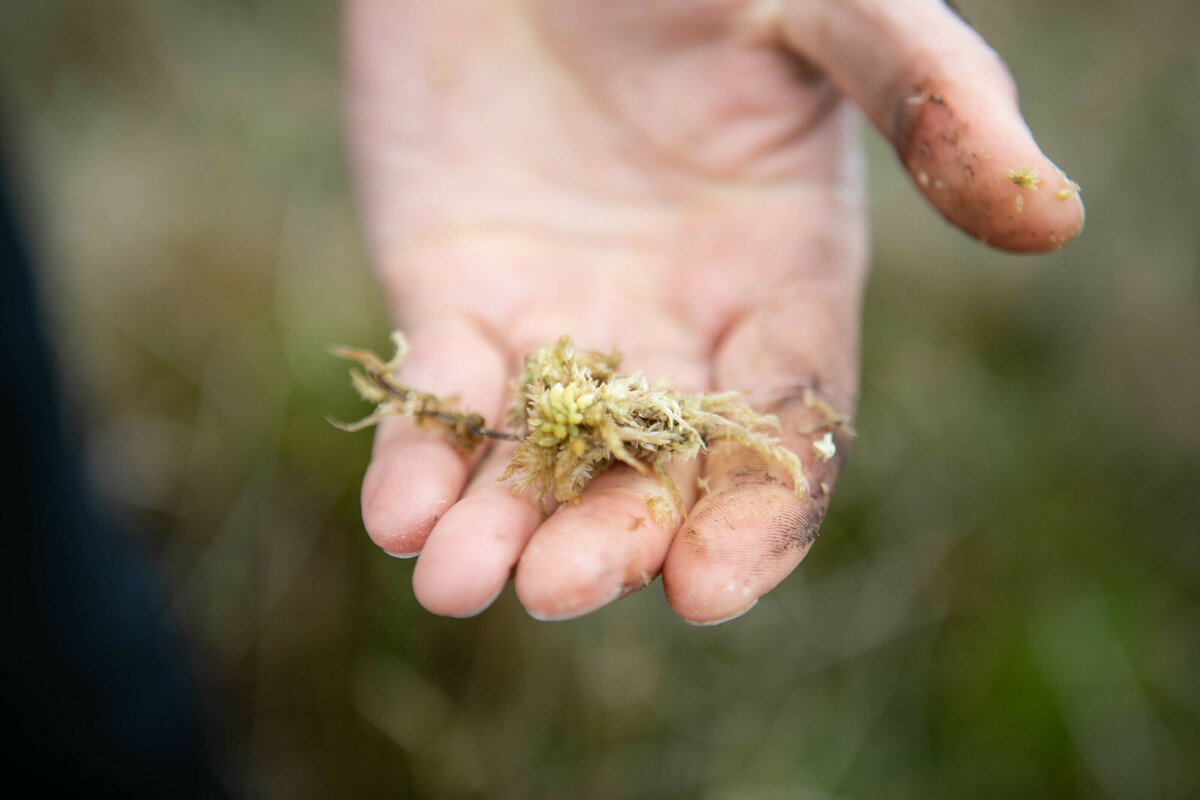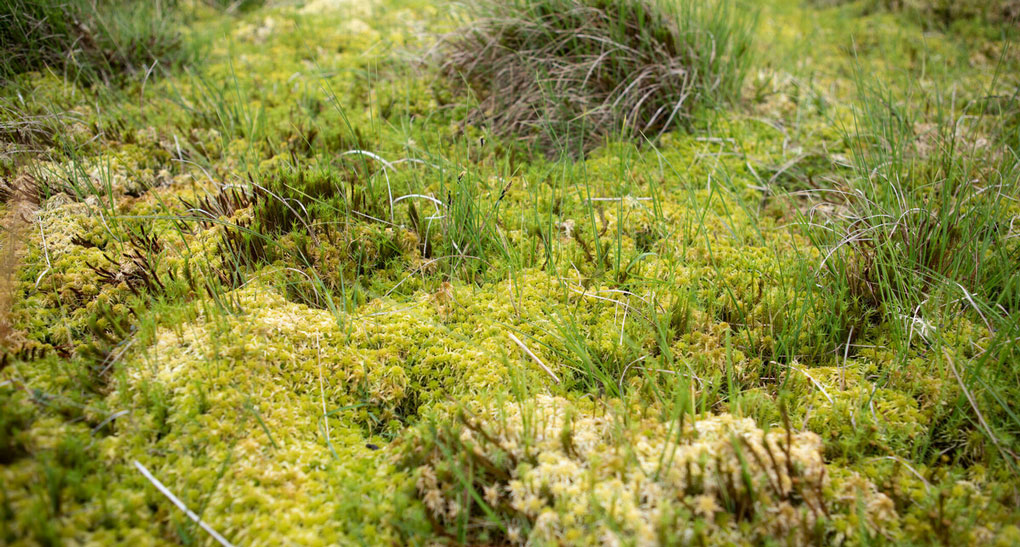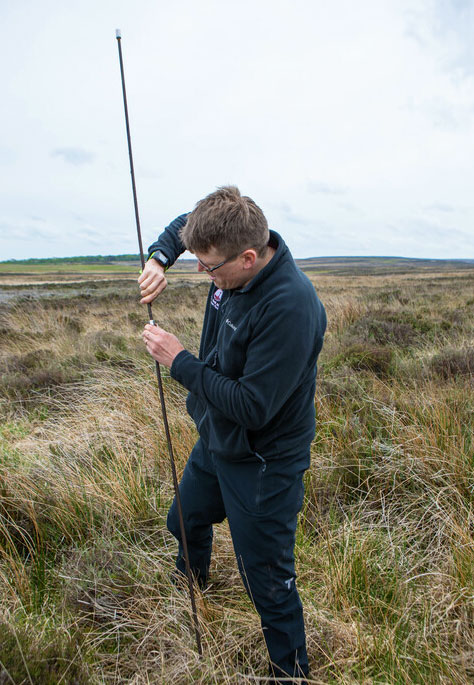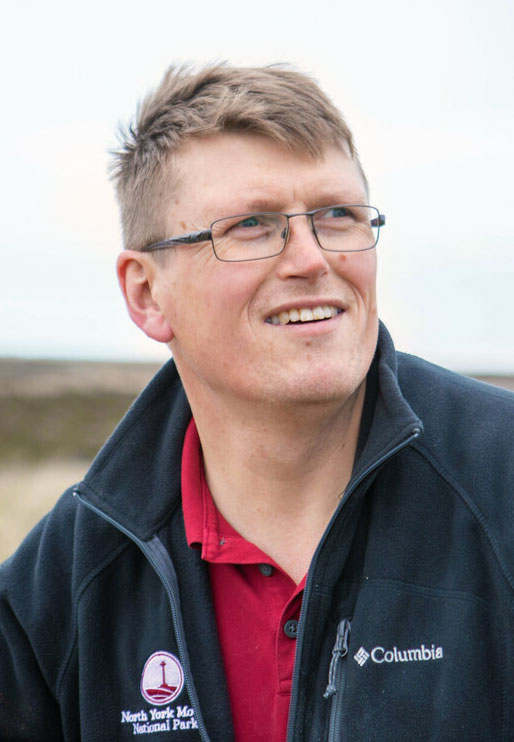Edward March-Shawcross, an environmentalist, climber and hillwalker, is leading on a project to restore the blanket bogs and peat habitats of the North York Moors National Park. I joined him on a peat survey across Fylingdales Moor, a vast heather moorland, to discover why it is vital to restore our peatlands and why he feels driven to do so.
Text and photography by Charlie Fox, interview with Edward March-Shawcross
We headed out in May along a narrow bridleway among a chorus of curlews, meadow pipits, and snipe – all ground-nesting birds. The distinct features of their song had an almost echoing presence against the wind of such an exposed and upland landscape.
As we moved between the heather, we kept a close eye on the ground and our surroundings, so as not to disturb any nests. I followed closely behind, carefully tracking his footing among the dense, soggy tufts of grass and moss. The sky was pale, the day was mild.
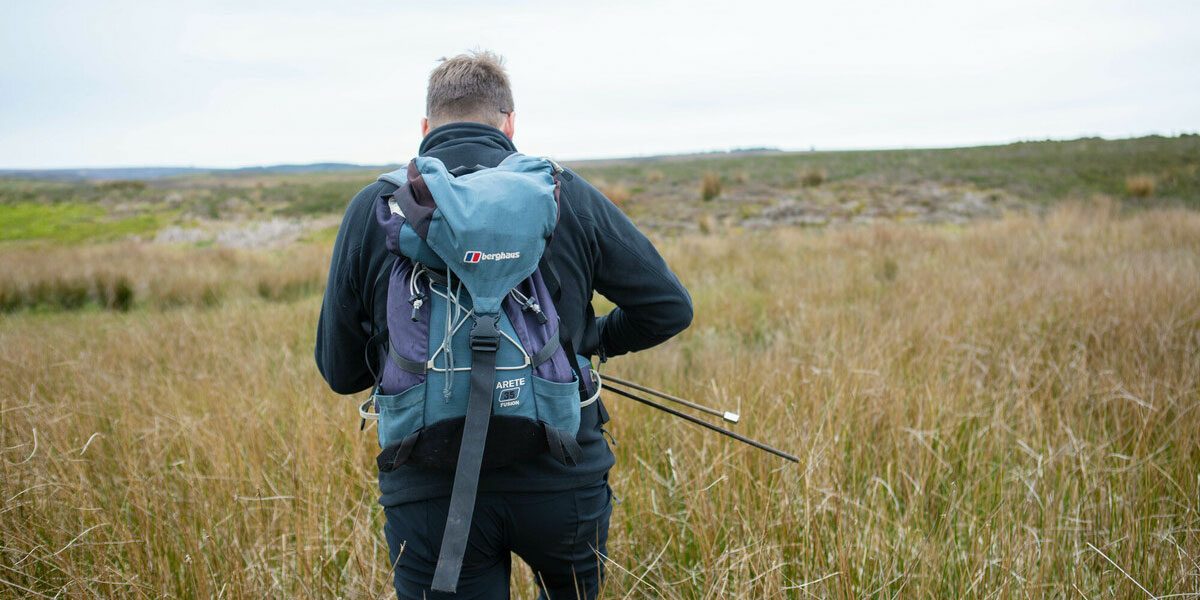
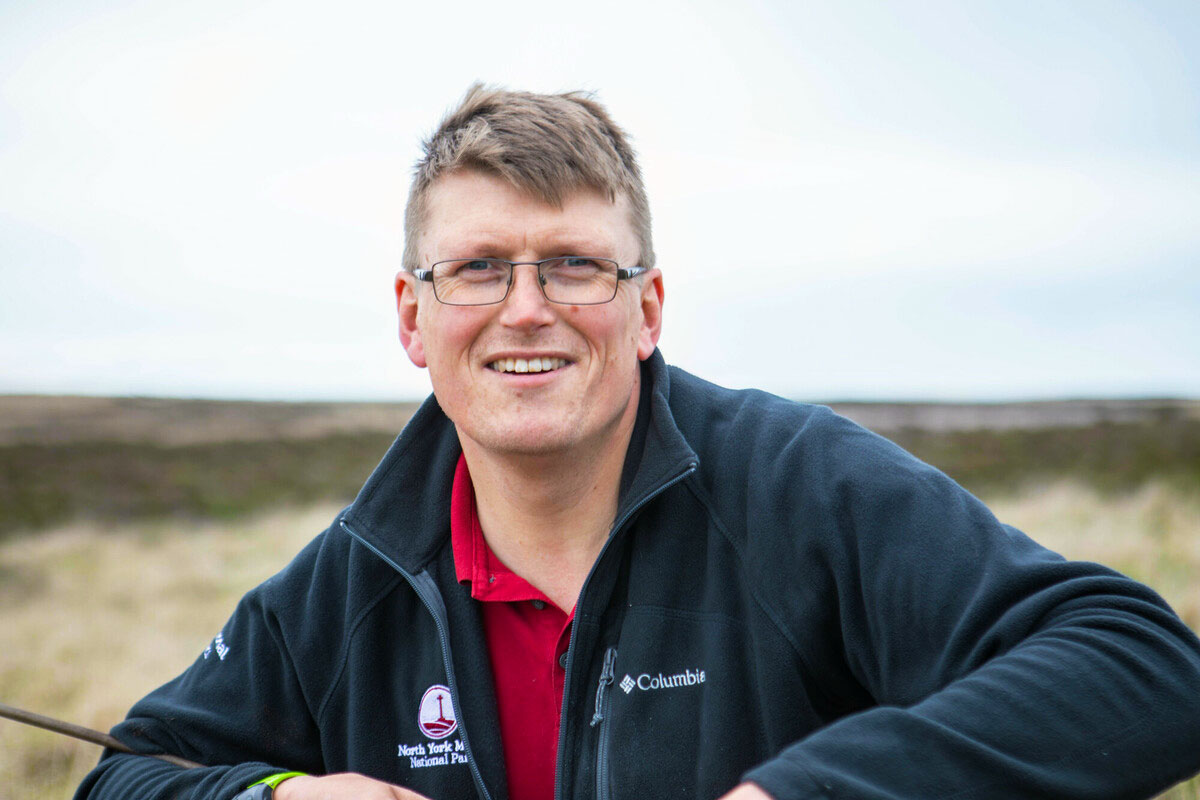
Throughout his experiences, as a biology teacher, caver and former rugby union player, Ed has always sustained a passion for enjoying the outdoors and essentially getting very muddy. The surveying of peat is a similarly mucky process, as he explains:
“We basically take this long iron rod and press it through the top layer of vegetation until it stops. Once it does, you’ve hit a layer of mineral soils. It is between this layer of vegetation and mineral soils that you can find peat.”
I watched closely as Ed plunged, what is a surprisingly simple scientific tool, through the earth. He then pulled the rod from the ground, before taking great care to analyse the soil along it, rubbing it between his fingers. If, when rolled it forms a clump then it’s unlikely to be peat, if it doesn’t and stays as a silky, dark brown paste it most likely is. He would then measure how far up the rod the peat went to indicate its depth.
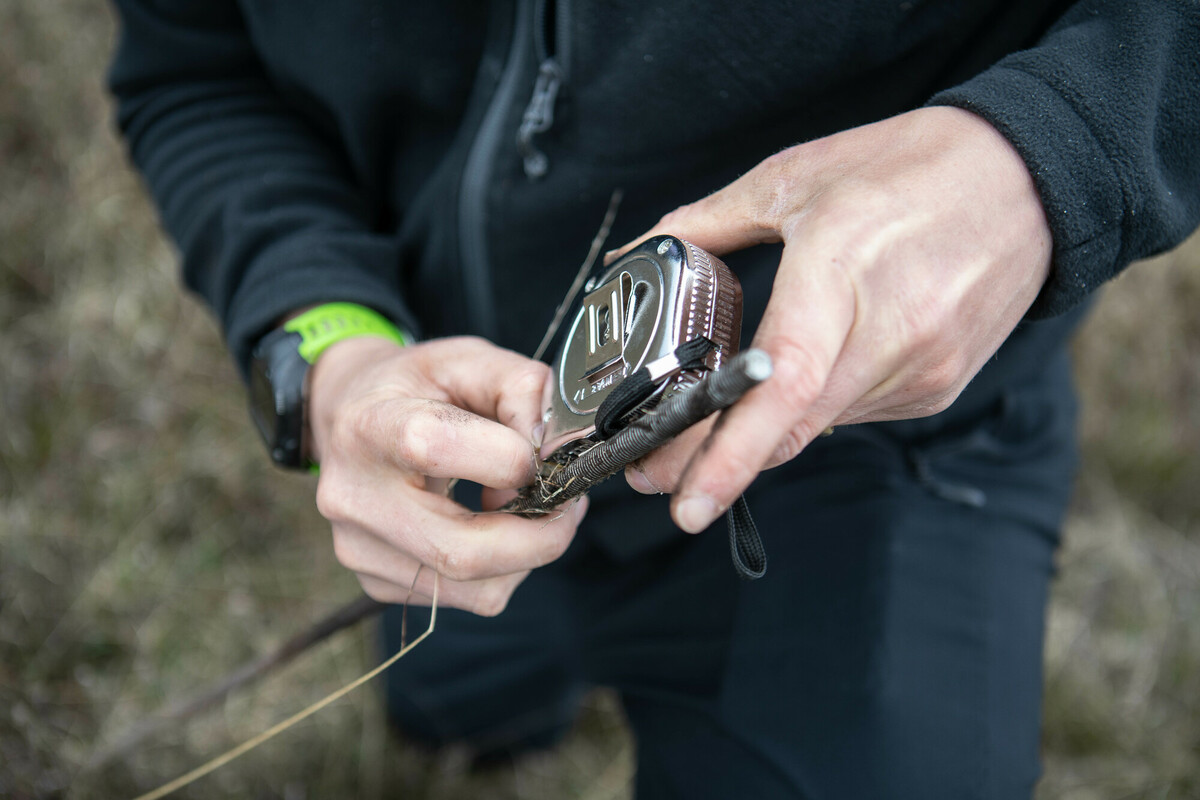
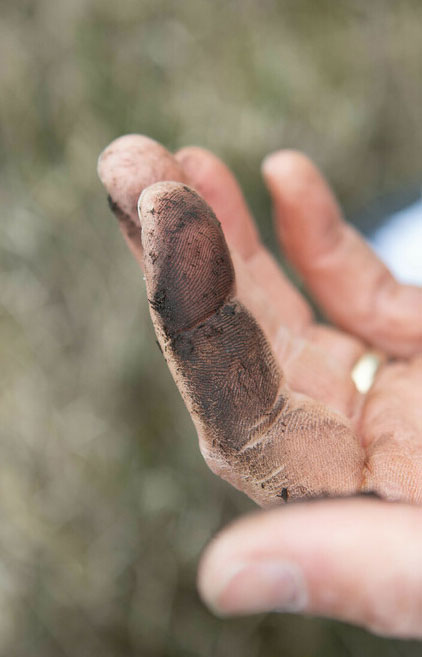
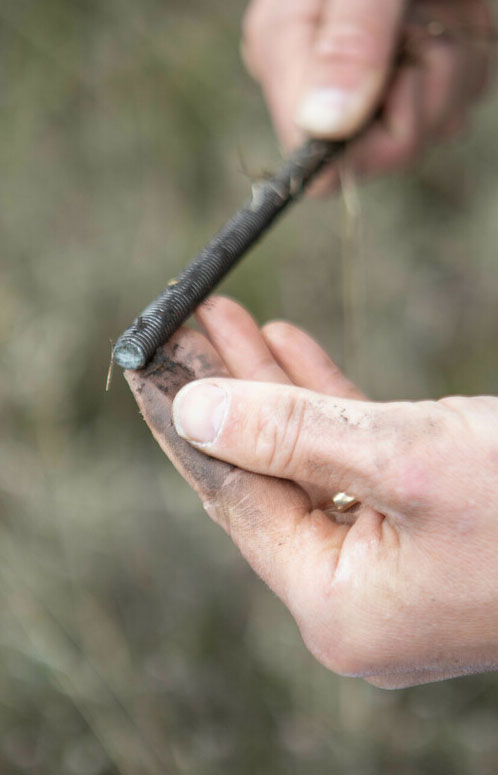
The formation of peat depends on a number of factors, as Ed describes: “Peat is able to form when the soil becomes waterlogged. Then as the plants die, they don’t breakdown properly because the ground is too acidic. You then get this layer of dead plants that accumulates and gets compacted over time to form peat.”
He also referred to the presence of sphagnum moss as an indicator of good peat-forming conditions, but the ones we came across at the start of the journey were few and far between. You could however begin to grasp the amazing characteristics of this delicate species with its tiny, slightly toothed leaves and sponge-like texture. It’s their ability to hold water which helps prevent the decay of plants necessary to form peat. These precious ecosystems store twice as much carbon as all the world’s forests, so are vital in tackling the climate crisis. As we continued across the moorland, Ed would stop on occasion to draw attention to the large, dug channels that cut through the land and were often filled with thick tufts of cottongrass – a plant with fluffy, white seed heads akin to cotton wool. Such trenches have been carved out over the centuries to drain water from the soil to boost grazing and agriculture, as well as for digging peat for use as fuel. However, as the water table drops and peat becomes exposed, it oxidises and releases carbon dioxide (CO2) into the atmosphere, a significant cause of global warming. Ed went on to emphasise how important it is to restore our peatlands: “These precious ecosystems store twice as much carbon as all the world’s forests, so are vital in tackling the climate crisis. As well as being the UK’s biggest carbon store they are also great habitats for wildlife, improve water quality and reduce the risk of flooding by slowing the flow of water coming off the uplands. “Here at the North York Moors National Park Authority, we’re committed to improving our peatlands and are now in the process of restoring around 4,500 hectares of degraded peat habit through our ‘Moor to Restore’ project – a long-term aim we hope to achieve by 2031.” About 45 minutes into our journey, we found ourselves surrounded by moorland, to the point that the road was no longer visible. The clouds thickened and a wash of grey passed over. But from among the fading colours a striking burst of green and yellow appeared across the floor near a large pool of water. It was a mass carpet of sphagnum moss, spongy, thick and light. It was not too far from here that Ed measured a depth of 121 centimetres of peat. When you compare this to another location, with dry, hard soil he took one measurement of only 10 centimetres. This incredible feature really emphasises the breadth of life and vibrancy of the National Park’s moorland, particularly in conditions suitable towards the growth of peat. When asked what motivated him to carry out this project, Ed replied: I have two kids and I want to feel that I’ve done my best for the planet. To limit climate change, to invest in the natural landscape and make it continue to be a positive, vibrant place to exist. "From being a kid, I’ve been up on the peat bogs just wandering doing my own species identification. I grew up thinking that these brown peat hags were its natural state, which of course it’s not. I then went through university thinking there is something we can do about this. "I also like that feeling of belonging that I get from trying to conserve and enhance the natural environment. It’s something George Monbiot talks about in his book Feral, about rewilding the human and reconnecting humans to the plant. I think we’ve lost that in a lot of ways and for me it is a place just to be." The North York Moors National Park Authority is working in partnership with global impact firm Palladium as part of the ‘Moor to Restore’ project. This also comes under ‘Revere’, a UK-wide collaboration between National Parks and Palladium that aims to raise private money to fund nature restoration. Keep up to date with the latest developments by heading over to the project’s webpage.